Opinion & Analysis
The Evolution of the Hogan Grip
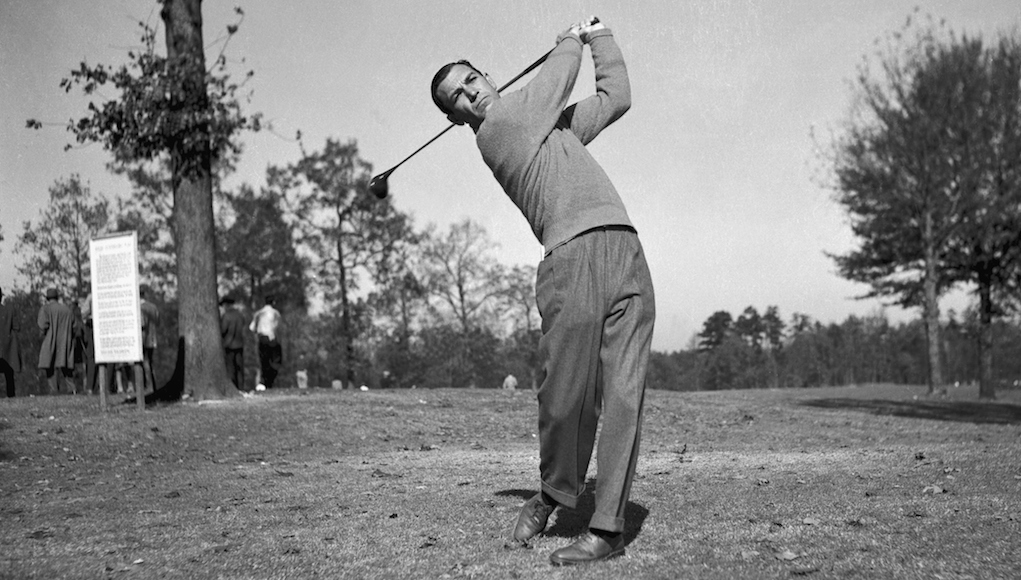
If you were to vote on who would truly be “the most interesting man in golf,” I believe Ben Hogan should win hands down. There may be a few better players in history (not many), but none had the career trajectory of Hogan, and certainly none cultivated the mystery that Hogan did regarding his technique.
Hogan’s ball striking skills were so superior (in 1940 he won three tournaments in two weeks, shooting 34-under par for 216 holes, missing just two greens in regulation) that his fellow competitors would stop their own practice to watch him on the range. When writing or speaking of the role of technique in his rise from struggling touring pro in most of the 1930’s to the game’s greatest practitioner of his time, Hogan regularly referred to the evolution of the way he gripped the club and how that affected his swing as possibly the single most important factor. His accounts, however, are often contradictory and confusing. As some have suggested, this may have been on purpose, as Hogan was loath to offer information for free that he had worked so tirelessly for on his own.
There are quite a number of sources of information regarding Hogan’s life and career, including three full-length biographies (Hogan: The Man Who Played for Glory by Gene Gregston, 1978, Hogan by Curt Sampson, 1997, and Ben Hogan, an American Life by James Dodson, 2004), two full-length books published by Hogan himself (Power Golf and Ben Hogan’s Five Lessons: The Modern Fundamentals of Golf), and various interviews and articles including “This is My Secret” from Life Magazine in 1955, and one-on-one interviews with Nick Seitz of Golf Digest in 1985, with George Peper of Golf Magazine in 1987, and a television interview with Ken Venturi. In each of these sources, the subject of Hogan’s grip arises, and the information given about how he arrived at his beliefs as to the details of assuming a proper grip and how he changed his grip over time are sometimes conflicting, and certainly confusing at best. For the purposes of this review, we will start with Hogan’s own words and writings.
One thing we need to do right away is to dispel the myth that Hogan was actually left-handed. In a 1987 Golf Magazine article, editor George Peper interviewed Hogan and asked this question: “You were a natural left-hander who took up the game right-handed, weren’t you?” To which Hogan responded: “No, that’s one of those things that’s always been written, but it’s an absolute myth. The truth is, the first golf club I owned was an old left-handed, wooden-shafted, rib-faced mashie that a fellow gave me, and that’s the club I was weaned on. During the mornings, we caddies would bang the ball up and down the practice field until the members arrived and it was time to go to work. So, I did all that formative practice left-handed, but I’m a natural right-hander.”
This should quiet all the people who insist Hogan was a lefty who played righty and that was a big advantage (which is not true at all, but that’s another story), and affected the way he held the club. Of course, those who claim Hogan was a natural lefty do so for a good reason. Here is what Hogan wrote in Ben Hogan’s Five Lessons: The Modern Fundamentals of Golf, which was published in 1957: “I was born left-handed — that was the normal way for me to do things. I was switched over to doing things right-handed when I was a boy, but I started golf as a left-hander because the first club I ever came into possession of, an old five-iron, was a left-handed stick”. If you ever wondered why Hogan is considered to be such a mystery, and why there is so much debate about what he did and why he did it, you can start right here.
Hogan first wrote about his grip in his first book, Power Golf, published in 1948. He had won 13 tournaments, including the PGA Championship (his first major), and was the leading money winner on the Tour. He was the dominant figure in the game, but in 1947 he slumped a bit and was outshined by Jimmy Demaret. He came back strong in 1948 with 11 wins and two majors, leading the money list and winning the Player of the Year award. The swings and posed photos in Power Golf are taken at Augusta National, most likely in 1947. The first chapter in Power Golf is titled, “Evolution of the Hogan Grip” (I stole that for this article) and starts by explaining that he started playing left-handed (see above), but he switched to righty because “the only clubs I could get were right-handed clubs.” As you can see, this is already getting confusing, as he never mentions whether he was right-handed or left-handed to begin with, but only that his first club was left-handed. You will see Hogan’s grip change in photos, but Hogan’s explanations as well as the opinions and observations of his biographers as to what the changes were and how they came about are often contradictory. Nevertheless, I will try to follow the information as best I can and make as much sense of this important topic in Hogan’s career as possible. Here is an excerpt from that first chapter:
“…let me say that I have tried all of the grips known to golfers at some time or another in my career. The grip I now use (in 1947) was arrived at by a series of trial-and-error experiments which began when I first took up the game. As recently as the fall of 1945, when I got out of the service, I made a radical change in my grip which I had been experimenting with whenever I got a chance to play golf while in the Army. I had been aware for some time that if I wanted to make a comeback as a successful golfer that I would have to make a change in my grip to correct a tendency I always had to over swing on the backswing. By the time I resumed tournament play, I had made the change and had everything in good working order. Formerly I used a grip in which I had what might be best described as a long thumb when speaking of the position of the thumb of the left hand on the shaft. During the course of the backswing that thumb used to slide down on the shaft, and as a result, I was always guilty of a certain looseness at the top of my swing which prevented me from getting the maximum of control. In correcting this, I pushed the left thumb back up on the shaft. The entire change couldn’t have amounted to more than half an inch in the movement of the thumb, but it was enough to restrict my backswing so that it no longer is loose.”
Hogan writes of his grip in more detail in Five Lessons: “When I changed over to the right side, possibly as a hangover from my left-handed start, I first used a cross-hand grip. I experimented next with the interlocking grip, and at length — I must have been about 15 at the time (around 1927) — I finally arrived at the overlapping grip. I was working then in the golf shop at the Glen Garden Club, and I copied the grip of Ted Longworth, the pro … Over the years since first adopting the overlapping grip, I have made two minor alterations. Right after I came out of the service, I changed from what is called the “long thumb” to a modified “short thumb.” I made my second alteration in 1946, moving my left hand a good half inch to the left. I was working then to find some way to of retaining my power while curbing my occasional tendency to hook. Moving my left hand over so that that thumb was directly down the middle of the shaft was the first step in licking that problem.” I find it quite interesting that Hogan left that bit of information out of “Power Golf,” and that he only revealed it after his semi-retirement in 1955 in the Life Magazine article “Hogan’s Secret” and the 1956 publication of “Five Lessons.” My guess is that he omitted it on purpose, not wanting to give away any competitive advantage.
Curt Sampson, in his biography of Hogan simply titled “Hogan,” provides some color to the story of Hogan’s beginnings as a caddy and his interaction with Longworth: “Long driving had been a macho thing in the Glen Garden caddie yard. Whatever caddies were still around at the end of the day would hit one ball each from the first tee: the shortest hitter had to run out onto the deserted course and pick up the balls, then they would do it again.” As Longworth recalled it for a story in the PGA Championship program in 1946, a few members always emerged from the 19th hole to watch. “Yah, Bennie, get ready to chase ‘em again,” the other boys would say, according to Longworth. (Byron) Nelson never lost; Hogan never won. Bennie tried hitting it cross-handed.”
“Bennie, if you don’t change that hog-killer’s grip, you might as well take up cattle rustling,” Longworth told Hogan. The tall, stoop shouldered pro bent down and untangled the boy’s hands. Since distance was the name of this game, he gave Bennie a distance grip, turning his left hand to the right and his right hand underneath the club, thus helping him close the clubface during the swing and producing a left-curving shot, a hook. Hooks roll.”
We can imagine what that grip looked like when we see the photo of what Hogan described as a “hook grip” in Power Golf. Looking at the photos of what Hogan thought was the ideal grip, and the one he used at the time, you can readily see how he weakened his grip as he explained.
This is obviously the grip that won Hogan the 1946 PGA Championship and nine tournaments between August of 1945 and April of 1946, but did Hogan make further changes after three-putting the 18th hole to lose the Masters in 1946? The history (no thanks to Hogan himself) is confusing, but let’s see if we can sort it out.
In the 1955 Life Magazine article “This is My Secret” (written after Hogan had essentially retired from competition and for which Hogan was paid $10,000), Hogan explains: “…in 1946, I was having trouble getting the ball in the air. I had a low, ducking, agonizing hook, the kind you can hang your coat on. I was finishing in the money and occasionally winning a tournament, even with a terrible game. But the handwriting was on the wall. If I was going to stay and make a living, something had to be done. I left the Tour and went home to Fort Worth about as desperate as a man can be. I sat and thought for three or four days. One night while laying awake in bed, I began thinking about a technique for hitting a golf ball that was so old it was almost new.” Hogan goes on to talk about the idea of “pronation,” whereby the clubface is rolled open by the hands right from the start of the backswing, and continues to open all the way to the top of the swing. “…before the night was over I had added two adjustments, which on paper made pronation hook-proof without any loss of distance.” Hogan then recounts how well the ideas worked in practice, and then in tournament play when he went to Chicago for the Tam O’ Shanter and won two events in a row. (An interesting side note: as it turns out, Hogan did not recollect this correctly. He finished 4th in the Tam O’ Shanter and it wasn’t until the Colonial later in the summer that he began to dominate the Tour). “The two adjustments had transformed pronation into a bonanza for me. They were so delicate that no one would ever think of looking for them, and I certainly was not going to tell anybody where to look. The first was in the grip. I moved my left hand one-eighth to one-quarter inch to the left so that the thumb was almost directly on top of the shaft. The second adjustment, which is the real meat of the “secret,” was nothing more than a twist or cocking of the left wrist. I cupped the wrist gradually backward and inward so that the wrist formed a slight V at the top of the swing…which had the effect of opening the face of the club to the widest practical extreme at the top of the swing.” Here is a picture from the article of Hogan demonstrating this change in the grip:
Compare this to his depiction of a “slice grip” in Power Golf, just 8 years earlier:
And here is Hogan demonstrating the grip in detail in his instructional masterpiece, “The Five Lessons: The Modern Fundamentals of Golf.”
Note that in the drawing the “V” formed by the left thumb and forefinger definitely points to the left of the chin, which would indicate a two-knuckle grip (Hogan says it should point to the right eye), while in the photo from the Life Magazine article above shows more of a one-knuckle grip where the “V” points more straight up. This makes a huge difference, and studying the pictures in the book it is unclear whether Hogan consistently used either. We can find a major difference between the Power Golf grip and the Five Lessons grip when we look at these two pictures of Hogan placing his left hand on the club:
At first glance, it would appear that Hogan is placing the club in his hand in a similar fashion, but take note of the angle of the shaft to the left forearm and the angle the fingers form in relation to the ground. The Power Golf version promotes more dorsiflexion (inward bending) of the wrist, while the Five Lessons grip is more palm oriented and would be what we would describe now as “weaker.” It is my opinion that Hogan played his best golf from 1946-1953 with his left hand closer to the Power Golf grip than the grip he demonstrates in Five Lessons and in the Life Magazine article. However, it is also evident to me that he steadily weakened his right hand, and that the obvious difference between the right-hand placement demonstrated in Power Golf and that of Five Lessons is more apparent in the videos of his swing after the accident. Let’s look at how he changed his ideas on right hand placement:
The key here in the eventual difference in the right-hand grip can be found in the phrasing. In Power Golf, Hogan says: “The club lies diagonally across the fingers of my right hand.” In Five Lessons, Hogan says: “The club lies across the top joint of the fingers of the right hand.” Here are examples of the finished right-hand grip:
With the club placed more horizontally across the fingers of the right hand at the bottom of the first joint with the palm facing the target, there is already much more of the hand to fold over the club, thus positioning the “V” more straight up at the chin in a weaker position. By positioning the club more diagonally across the fingers Hogan sets the right hand more under the club in a stronger position.
Hogan speaks of his game prior to his epiphany of 1946 as though he was a terrible golfer with a pronounced hook that threatened to end his career at any time. The record shows, however, that he won four events and was the Tour’s leading money winner in 1940. He won five events in 1941, and won both the Vardon Trophy (lowest average scoring average) and led the money list, and in 1942 he won six events and was leading money winner before being called up for service in World War II. Upon his return from the war, he won 5 times after August in 1945, then four more times in 1946 before his first win utilizing his “secret.’ It is apparent, however, that what Hogan found that night lying in bed propelled him to even greater heights from his win at Colonial in 1946 to his accident in early 1949. During that span, he won 29 times, a number that includes three major championships. It is interesting that Cary Middlecoff “remembered a pre-accident Hogan who occasionally missed fairways and greens just like everybody else”, but that “it was in 1950 that he began showing the kind of precision golf that set him apart,” Middlecoff wrote in his book, The Golf Swing.
“In 1950, (Hogan) began to take on the miracle-man aura. Small crowds would gather around him and try to watch his every move anytime he started hitting practice balls.” Hogan himself would disagree with Middlecoff, but said in his interview with Ken Venturi that while he never hit the ball as well after the accident as he had before, he “played” better, noting that it was his belief that course management played a greater role in his success than anyone could imagine. That’s certainly truer when you can hit almost every shot right where you are aiming.
- LIKE334
- LEGIT38
- WOW29
- LOL7
- IDHT7
- FLOP2
- OB2
- SHANK14
19th Hole
Vincenzi’s 2024 Wells Fargo Championship betting preview: Tommy Fleetwood ready to finally land maiden PGA Tour title

The PGA Tour season ramps back up this week for another “signature event,” as golf fans look forward to the year’s second major championship next week.
After two weaker-field events in the Zurich Classic and the CJ Cup Byron Nelson, most of the best players in the world will head to historic Quail Hollow for one of the best non-major tournaments of the year.
Last season, Wyndham Clark won the event by four shots.
Quail Hollow is a par-71 measuring 7,521 yards that features Bermudagrass greens. The tree-lined, parkland style course can play quite difficult and features one of the most difficult three-hole stretches in golf known as “The Green Mile,” which makes up holes 16-18: two mammoth par 4s and a 221-yard par 3. All three holes have an average score over par, and water is in play in each of the last five holes on the course.
The field is excellent this week with 68 golfers teeing it up without a cut. All of the golfers who’ve qualified are set to tee it up, with the exception of Scottie Scheffler, who is expecting the birth of his first child.
Past Winners at Quail Hollow
- 2023: Wyndham Clark (-19)
- 2022: Max Homa (-8)
- 2021: Rory McIlroy (-10)
- 2019: Max Homa (-15)
- 2018: Jason Day (-12)
- 2017: Justin Thomas (-8) (PGA Championship)
- 2016: James Hahn (-9)
- 2015: Rory McIlroy (-21)
Key Stats For Quail Hollow
Strokes Gained: Approach
Strokes gained: Approach will be extremely important this week as second shots at Quail Hollow can be very difficult.
Total SG: Approach Over Past 24 Rounds
- Akshay Bhatia (+1.16)
- Tom Hoge (+1.12)
- Corey Conners (+1.01)
- Shane Lowry (+0.93)
- Austin Eckroat (+0.82)
Strokes Gained: Off the Tee
Quail Hollow is a long course on which it is important to play from the fairway. Both distance and accuracy are important, as shorter tee shots will result in approach shots from 200 or more yards. With most of the holes heavily tree lined, errant drives will create some real trouble for the players.
Strokes Gained: Off the Tee Past 24 Rounds:
- Ludvig Aberg (+0.73)
- Rory McIlroy (+0.69)
- Xander Schauffele (+0.62)
- Viktor Hovland (+0.58)
- Chris Kirk (+0.52)
Proximity: 175-200
The 175-200 range is key at Quail Hollow. Players who can hit their long irons well will rise to the top of the leaderboard.
Proximity: 175-200+ over past 24 rounds:
- Cameron Young (28’2″)
- Akshay Bhatia (29’6″)
- Ludvig Aberg (+30’6″)
- Sam Burns (+30’6″)
- Collin Morikawa (+30’9″)
SG: Total on Tom Fazio Designs
Players who thrive on Tom Fazio designs get a bump for me at Quail Hollow this week.
SG: Total on Tom Fazio Designs over past 36 rounds:
- Patrick Cantlay (+2.10)
- Rory McIlroy (+1.95)
- Tommy Fleetwood (+1.68)
- Austin Eckroat (+1.60)
- Will Zalatoris (+1.57)
Strokes Gained: Putting (Bermudagrass)
Strokes Gained: Putting has historically graded out as the most important statistic at Quail Hollow. While it isn’t always predictable, I do want to have it in the model to bump up golfers who prefer to putt on Bermudagrass.
Strokes Gained: Putting (Bermudagrass) Over Past 24 Rounds:
- Taylor Moore (+0.82)
- Nick Dunlap (+.76)
- Wyndham Clark (+.69)
- Emiliano Grillo (+.64)
- Cam Davis (+.61)
Course History
This stat will incorporate players that have played well in the past at Quail Hollow.
Course History over past 36 rounds (per round):
- Rory McIlroy (+2.50)
- Justin Thomas (+1.96)
- Jason Day (+1.92)
- Rickie Fowler (+1.83)
- Viktor Hovland (+1.78)
Wells Fargo Championship Model Rankings
Below, I’ve compiled overall model rankings using a combination of the five key statistical categories previously discussed — SG: Approach (27%), SG: Off the Tee (23%), SG: Total on Fazio designs (12%), Proximity: 175-200 (12%), SG: Putting Bermuda grass (12%), and Course History (14%).
- Wyndham Clark
- Rory McIlroy
- Xander Schauffele
- Shane Lowry
- Hideki Matsuyama
- Viktor Hovland
- Cameron Young
- Austin Eckroat
- Byeong Hun An
- Justin Thomas
2024 Wells Fargo Championship Picks
Tommy Fleetwood +2500 (DraftKings)
I know many out there have Tommy fatigue when it comes to betting, which is completely understandable given his lack of ability to win on the PGA Tour thus far in his career. However, history has shown us that players with Fleetwood’s talent eventually break though, and I believe for Tommy, it’s just a matter of time.
Fleetwood has been excellent on Tom Fazio designs. Over his past 36 rounds, he ranks 3rd in the field in Strokes Gained: Total on Fazio tracks. He’s also been incredibly reliable off the tee this season. He’s gained strokes in the category in eight of his past nine starts, including at The Masters, the PLAYERS and the three “signature events” of the season. Tommy is a golfer built for tougher courses and can grind it out in difficult conditions.
Last year, Fleetwood was the first-round leader at this event, firing a Thursday 65. He finished the event in a tie for 5th place.
For those worried about Fleetwood’s disappointing start his last time out at Harbour Town, he’s bounced back nicely after plenty of poor outings this season. His T7 at the Valero Texas Open was after a MC and T35 in his prior two starts and his win at the Dubai Invitational came after a T47 at the Sentry.
I expect Tommy to bounce back this week and contend at Quail Hollow.
Justin Thomas +3000 (DraftKings)
It’s been a rough couple of years for Justin Thomas, but I don’t believe things are quite as bad as they seem for JT. He got caught in the bad side of the draw at Augusta for last month’s Masters and has gained strokes on approach in seven of his nine starts in 2024.
Thomas may have found something in his most recent start at the RBC Heritage. He finished T5 at a course that he isn’t the best fit for on paper. He also finally got the putter working and ranked 15th in Strokes Gained: Putting for the week.
The two-time PGA champion captured the first of his two major championships at Quail Hollow back in 2017, and some good vibes from the course may be enough to get JT out of his slump.
Thomas hasn’t won an event in just about two years. However, I still believe that will change soon as he’s been one of the most prolific winners throughout his PGA Tour career. Since 2015, he has 15 PGA Tour wins.
Course history is pretty sticky at Quail Hollow, with players who like the course playing well there on a regular basis. In addition to JT’s PGA Championship win in 2017, he went 4-1 at the 2022 Presidents Cup and finished T14 at the event last year despite being in poor form. Thomas can return as one of the top players on the PGA Tour with a win at a “signature event” this week.
Cameron Young +3500 (DraftKings)
For many golf bettors, it’s been frustrating backing Cam Young this season. His talent is undeniable, and one of the best and most consistent performers on the PGA Tour. He just hasn’t broken through with a victory yet. Quail Hollow has been a great place for elite players to get their first victory. Rory McIlroy, Anthony Kim, Rickie Fowler and Wyndham Clark all notched their first PGA Tour win at Quail.
Throughout Cam Young’s career, he has thrived at tougher courses with strong fields. This season, he finished T16 at Riviera and T9 at Augusta National, demonstrating his preference of a tough test. His ability to hit the ball long and straight off the tee make him an ideal fit for Quail Hollow, despite playing pretty poorly his first time out in 2023 (T59). Young should be comfortable playing in the region as he played his college golf at Wake Forest, which is about an hour’s drive from Quail Hollow.
The 26-year-old has played well at Tom Fazio designs in the past and ranks 8th in the field in Strokes Gained: Total on those courses in his last 36 rounds. Perhaps most importantly, this season, Young is the best player on the PGA Tour in terms of proximity from 175-200 in the fairway, which is where a plurality and many crucial shots will come from this week.
Young is an elite talent and Quail Hollow has been kind to players of his ilk who’ve yet to win on Tour.
Byeong Hun An +5000 (FanDuel)
Byeong Hun An missed some opportunities last weekend at the CJ Cup Byron Nelson. He finished T4 and played some outstanding golf, but a couple of missed short putts prevented him from getting to the winning score of -23. Despite not getting the win, it’s hard to view An’s performance as anything other than an overwhelming success. It was An’s fourth top-ten finish of the season.
Last week, An gained 6.5 strokes ball striking, which was 7th in the field. He also ranked 12th for Strokes Gained: Approach and 13th for Strokes Gained: Off the Tee. The South Korean has been hitting the ball so well from tee to green all season long and he now heads to a golf course that should reward his precision.
An’s driver and long irons are absolute weapons. At Quail Hollow, players will see plenty of approach shots from the 175-200 range as well as some from 200+. In his past 24 rounds, Ben ranks 3rd in the field in proximity from 175-200 and 12th in proximity from 200+. Playing in an event that will not end up being a “birdie” fest should help An, who can separate from the field with his strong tee to green play. The putter may not always cooperate but getting to -15 is much easier than getting to -23 for elite ball strikers who tend to struggle on the greens.
Winning a “signature event” feels like a tall task for An this week with so many elite players in the field. However, he’s finished T16 at the Genesis Invitational, T16 at The Masters and T8 at the Arnold Palmer Invitational. The 32-year-old’s game has improved drastically this season and I believe he’s ready to get the biggest win of his career.
- LIKE7
- LEGIT2
- WOW0
- LOL0
- IDHT0
- FLOP0
- OB0
- SHANK0
19th Hole
Vincenzi’s LIV Golf Singapore betting preview: Course specialist ready to thrive once again

After another strong showing in Australia, LIV Golf will head to Sentosa Golf Club in Singapore looking to build off of what was undoubtedly their best event to date.
Sentosa Golf Club sits on the southern tip of Singapore and is one of the most beautiful courses in the world. The course is more than just incredible scenically; it was also rated 55th in Golf Digest’s top-100 courses in 2022-2023 and has been consistently regarded as one of the best courses in Asia. Prior to being part of the LIV rotation, the course hosted the Singapore Open every year since 2005.
Sentosa Golf Club is a par 71 measuring 7,406 yards. The course will require precise ball striking and some length off the tee. It’s possible to go low due to the pristine conditions, but there are also plenty of hazards and difficult spots on the course that can bring double bogey into play in a hurry. The Bermudagrass greens are perfectly manicured, and the course has spent millions on the sub-air system to keep the greens rolling fast. I spoke to Asian Tour player, Travis Smyth, who described the greens as “the best [he’s] ever played.”
Davis Love III, who competed in a Singapore Open in 2019, also gushed over the condition of the golf course.
“I love the greens. They are fabulous,” the 21-time PGA Tour winner said.
Love III also spoke about other aspects of the golf course.
“The greens are great; the fairways are perfect. It is a wonderful course, and it’s tricky off the tee.”
“It’s a long golf course, and you get some long iron shots. It takes somebody hitting it great to hit every green even though they are big.”
As Love III said, the course can be difficult off the tee due to the length of the course and the trouble looming around every corner. It will take a terrific ball striking week to win at Sentosa Golf Club.
In his pre-tournament press conference last season, Phil Mickelson echoed many of the same sentiments.
“To play Sentosa effectively, you’re going to have a lot of shots from 160 to 210, a lot of full 6-, 7-, 8-iron shots, and you need to hit those really well and you need to drive the ball well.”
Golfers who excel from tee to green and can dial in their longer irons will have a massive advantage this week.
Stat Leaders at LIV Golf Adelaide:
Fairways Hit
1.) Louis Oosthuizen
2.) Anirban Lahiri
3.) Jon Rahm
4.) Brendan Steele
5.) Cameron Tringale
Greens in Regulation
1.) Brooks Koepka
2.) Brendan Steele
3.) Dean Burmester
4.) Cameron Tringale
5.) Anirban Lahiri
Birdies Made
1.) Brendan Steele
2.) Dean Burmester
3.) Thomas Pieters
4.) Patrick Reed
5.) Carlos Ortiz
LIV Golf Individual Standings:
1.) Joaquin Niemann
2.) Jon Rahm
3.) Dean Burmester
4.) Louis Oosthuizen
5.) Abraham Ancer
LIV Golf Team Standings:
1.) Crushers
2.) Legion XIII
3.) Torque
4.) Stinger GC
5.) Ripper GC
LIV Golf Singapore Picks
Sergio Garcia +3000 (DraftKings)
Sergio Garcia is no stranger to Sentosa Golf Club. The Spaniard won the Singapore Open in 2018 by five strokes and lost in a playoff at LIV Singapore last year to scorching hot Talor Gooch. Looking at the course setup, it’s no surprise that a player like Sergio has played incredible golf here. He’s long off the tee and is one of the better long iron players in the world when he’s in form. Garcia is also statistically a much better putter on Bermudagrass than he is on other putting surfaces. He’s putt extremely well on Sentosa’s incredibly pure green complexes.
This season, Garcia has two runner-up finishes, both of them being playoff losses. Both El Camaleon and Doral are courses he’s had success at in his career. The Spaniard is a player who plays well at his tracks, and Sentosa is one of them. I believe Sergio will get himself in the mix this week. Hopefully the third time is a charm in Singapore.
Paul Casey +3300 (FanDuel)
Paul Casey is in the midst of one of his best seasons in the five years or so. The results recently have been up and down, but he’s shown that when he’s on a golf course that suits his game, he’s amongst the contenders.
This season, Casey has finishes of T5 (LIV Las Vegas), T2 (LIV Hong Kong), and a 6th at the Singapore Classic on the DP World Tour. At his best, the Englishman is one of the best long iron players in the world, which makes him a strong fit for Sentosa. Despite being in poor form last season, he was able to fire a Sunday 63, which shows he can low here at the course.
It’s been three years since Casey has won a tournament (Omega Dubai Desert Classic in 2021), but he’s been one of the top players on LIV this season and I think he can get it done at some point this season.
Mito Pereira +5000 (Bet365)
Since Mito Pereira’s unfortunate demise at the 2022 PGA Championship, he’s been extremely inconsistent. However, over the past few months, the Chilean has played well on the International Series as well as his most recent LIV start. Mito finished 8th at LIV Adelaide, which was his best LIV finish this season.
Last year, Pereira finished 5th at LIV Singapore, shooting fantastic rounds of 67-66-66. It makes sense why Mito would like Sentosa, as preeminent ball strikers tend to rise to the challenge of the golf course. He’s a great long iron player who is long and straight off the tee.
Mito has some experience playing in Asia and is one of the most talented players on LIV who’s yet to get in the winner’s circle. I have questions about whether or not he can come through once in contention, but if he gets there, I’m happy to roll the dice.
Andy Ogletree +15000 (DraftKings)
Andy Ogletree is a player I expected to have a strong 2024 but struggled early in his first full season on LIV. After failing to crack the top-25 in any LIV event this year, the former U.S. Amateur champion finally figured things out, finished in a tie for 3rd at LIV Adelaide.
Ogletree should be incredible comfortable playing in Singapore. He won the International Series Qatar last year and finished T3 at the International Series Singapore. The 26-year-old was arguably the best player on the Asian Tour in 2023 and has been fantastic in the continent over the past 18 months.
If Ogletree has indeed found form, he looks to be an amazing value at triple-digit odds.
- LIKE3
- LEGIT3
- WOW1
- LOL2
- IDHT0
- FLOP2
- OB0
- SHANK0
Opinion & Analysis
Ryan: Lessons from the worst golf instructor in America

In Tampa, there is a golf course that boasts carts that do not work, a water range, and a group of players none of which have any chance to break 80. The course is overseen by a staff of crusty men who have succeeded at nothing in life but ending up at the worst-run course in America. However, this place is no failure. With several other local courses going out of business — and boasting outstanding greens — the place is booked full.
While I came for the great greens, I stayed to watch our resident instructor; a poor-tempered, method teacher who caters to the hopeless. At first, it was simply hilarious. However, after months of listening and watching, something clicked. I realized I had a front-row seat to the worst golf instructor in America.
Here are some of my key takeaways.
Method Teacher
It is widely accepted that there are three types of golf instructors: system teachers, non-system teachers, and method teachers. Method teachers prescribe the same antidote for each student based on a preamble which teachers can learn in a couple day certification.
Method teaching allows anyone to be certified. This process caters to the lowest caliber instructor, creating the illusion of competency. This empowers these underqualified instructors with the moniker of “certified” to prey on the innocent and uninformed.
The Cult of Stack and Jilt
The Stack and Tilt website proudly boasts, “A golfer swings his hands inward in the backswing as opposed to straight back to 1) create power, similar to a field goal kicker moving his leg in an arc and 2) to promote a swing that is in-to-out, which produces a draw (and eliminates a slice).”
Now, let me tell you something, there is this law of the universe which says “energy can either be created or destroyed,” so either these guys are defying physics or they have no idea what they are taking about. Further, the idea that the first move of the backswing determines impact is conjecture with a splash of utter fantasy.
These are the pontifications of a method — a set of prescriptions applied to everyone with the hope of some success through the placebo effect. It is one thing for a naive student to believe, for a golf instructor to drink and then dispel this Kool-Aid is malpractice.
Fooled by Randomness
In flipping a coin, or even a March Madness bet, there is a 50-50 chance of success. In golf, especially for new players, results are asymmetric. Simply put: Anything can happen. The problem is that when bad instructors work with high handicappers, each and every shot gets its own diagnosis and prescription. Soon the student is overwhelmed.
Now here’s the sinister thing: The overwhelming information is by design. In this case, the coach is not trying to make you better, they are trying to make you reliant on them for information. A quasi Stockholm syndrome of codependency.
Practice
One of the most important scientists of the 20th century was Ivan Pavlov. As you might recall, he found that animals, including humans, could be conditioned into biological responses. In golf, the idea of practice has made millions of hackers salivate that they are one lesson or practice session from “the secret.”
Sunk Cost
The idea for the worst golf instructor is to create control and dependency so that clients ignore the sunk cost of not getting better. Instead, they are held hostage by the idea that they are one lesson or tip away from unlocking their potential.
Cliches
Cliches have the effect of terminating thoughts. However, they are the weapon of choice for this instructor. Add some hyperbole and students actually get no information. As a result, these players couldn’t play golf. When they did, they had no real scheme. With no idea what they are doing, they would descend into a spiral of no idea what to do, bad results, lower confidence, and running back to the lesson tee from more cliches.
The fact is that poor instruction is about conditioning players to become reliant members of your cult. To take away autonomy. To use practice as a form of control. To sell more golf lessons not by making people better but through the guise that without the teacher, the student can never reach their full potential. All under the umbrella of being “certified” (in a 2-day course!) and a melee of cliches.
This of course is not just happening at my muni but is a systemic problem around the country and around the world, the consequences of which are giving people a great reason to stop playing golf. But hey, at least it’s selling a lot of golf balls…
- LIKE19
- LEGIT2
- WOW0
- LOL4
- IDHT1
- FLOP4
- OB1
- SHANK25
-

 19th Hole2 weeks ago
19th Hole2 weeks agoJustin Thomas on the equipment choice of Scottie Scheffler that he thinks is ‘weird’
-

 19th Hole2 weeks ago
19th Hole2 weeks ago‘Absolutely crazy’ – Major champ lays into Patrick Cantlay over his decision on final hole of RBC Heritage
-

 19th Hole3 weeks ago
19th Hole3 weeks agoBrandel Chamblee has ‘no doubt’ who started the McIlroy/LIV rumor and why
-

 19th Hole2 weeks ago
19th Hole2 weeks agoLET pro gives detailed financial breakdown of first week on tour…and the net result may shock you
-

 19th Hole7 days ago
19th Hole7 days agoGary Player claims this is what ‘completely ruined’ Tiger Woods’ career
-

 19th Hole11 hours ago
19th Hole11 hours agoReport: LIV star turns down PGA Championship invite due to ‘personal commitments’
-

 Whats in the Bag1 week ago
Whats in the Bag1 week agoTeam McIlowry (Rory McIlroy, Shane Lowry) winning WITBs: 2024 Zurich Classic
-

 19th Hole3 weeks ago
19th Hole3 weeks agoTaylorMade signs 15-year-old AJGA Rolex Junior Player of the Year to an NIL contract

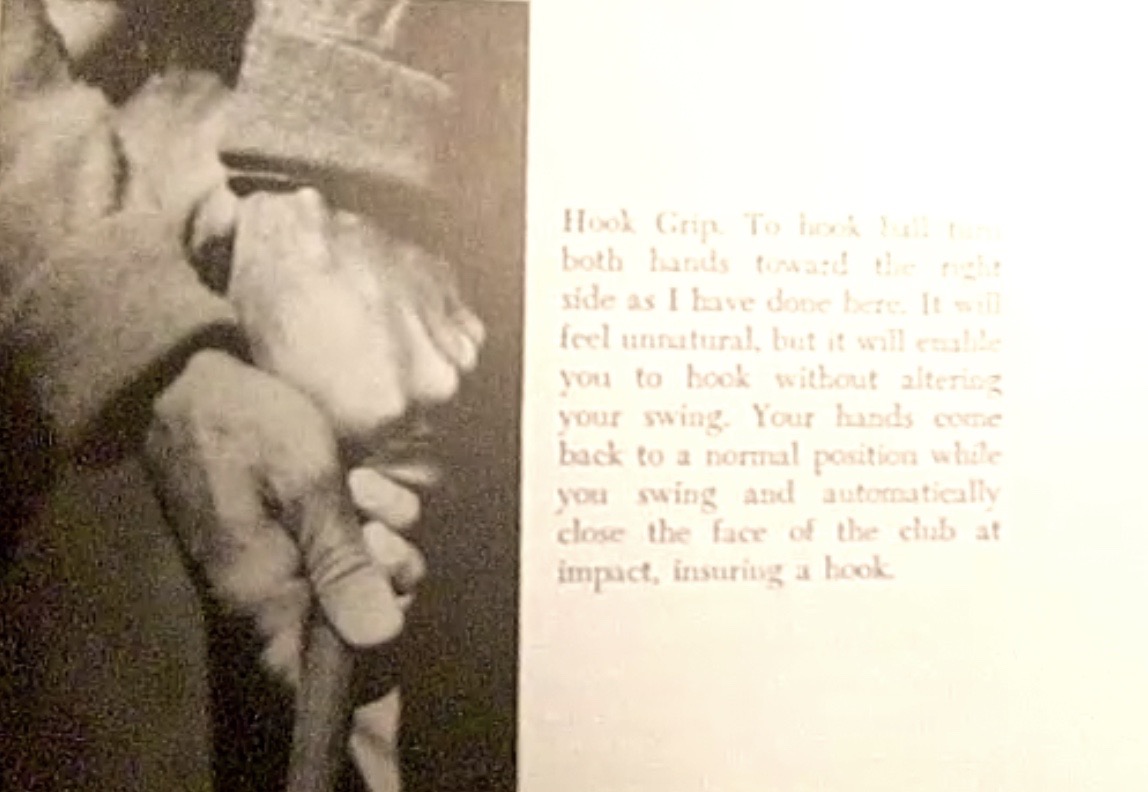
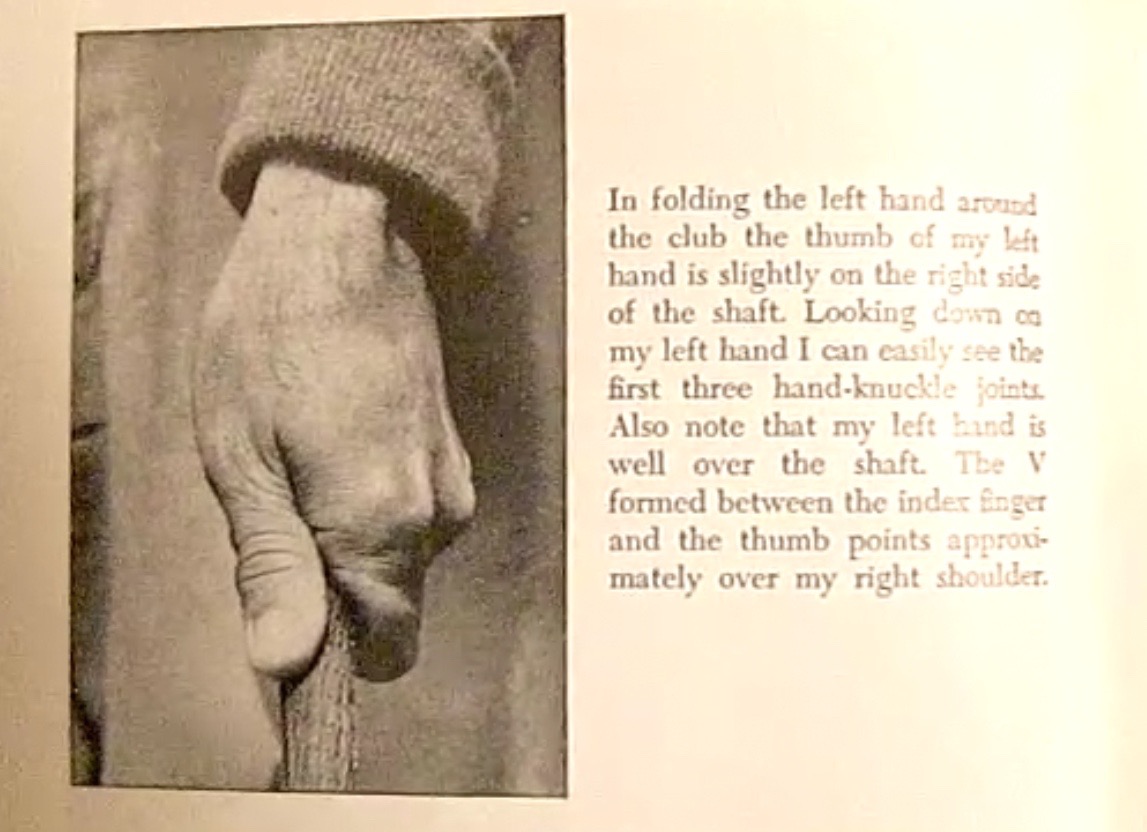
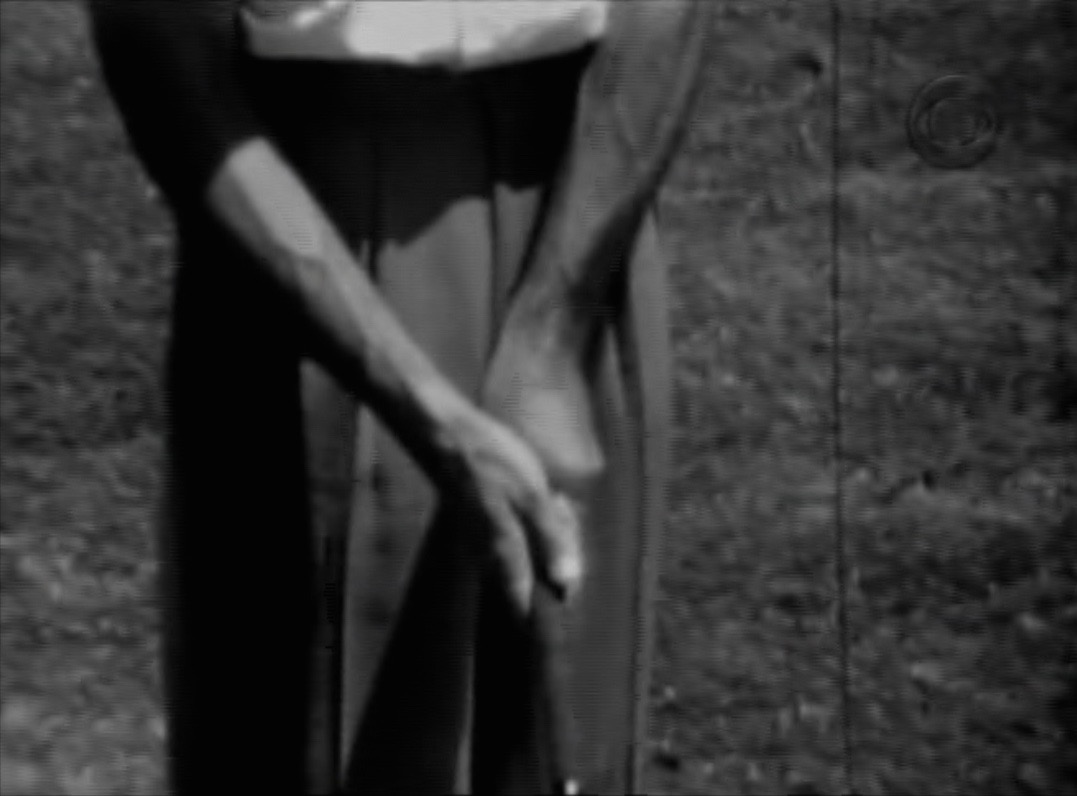
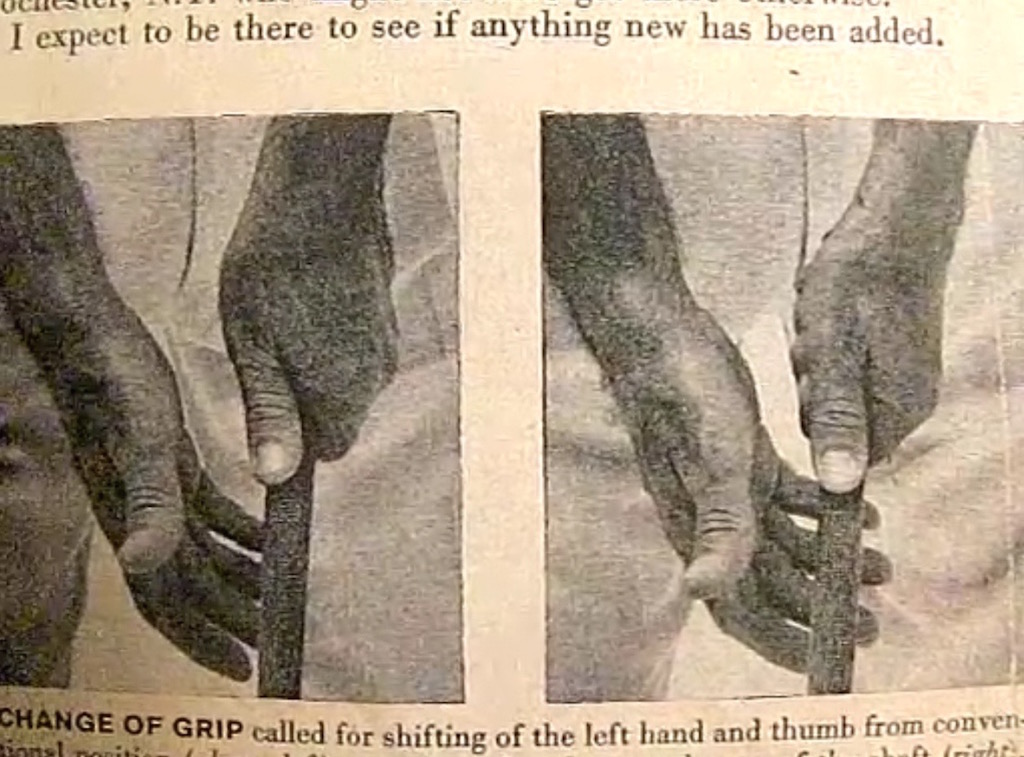


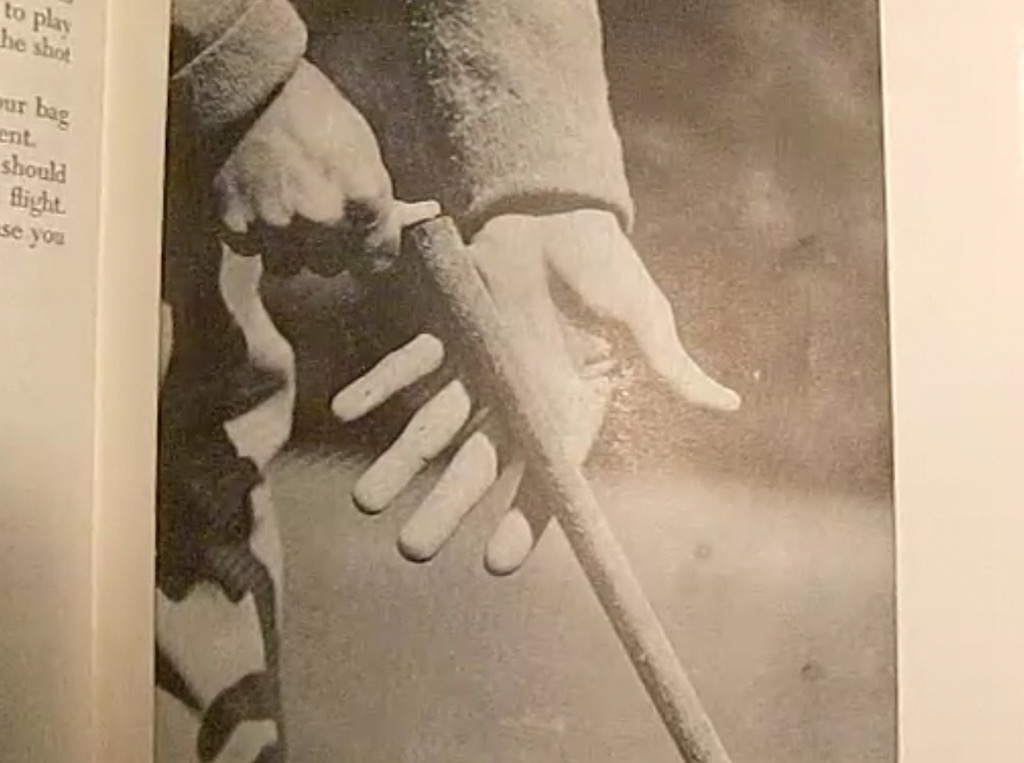
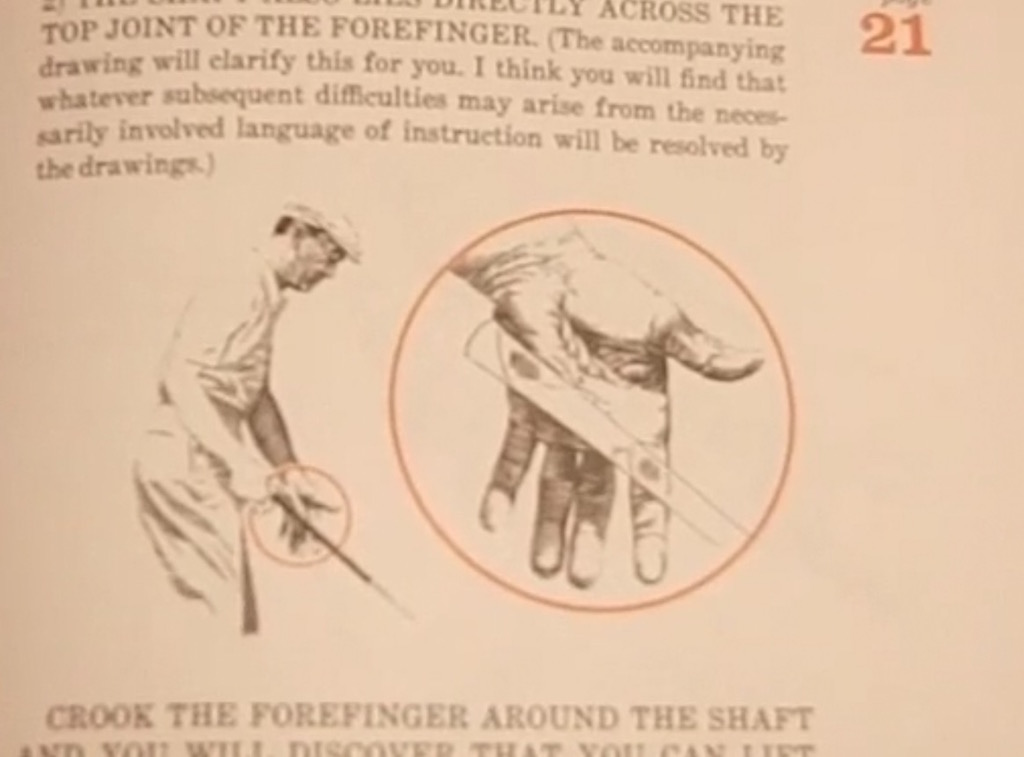
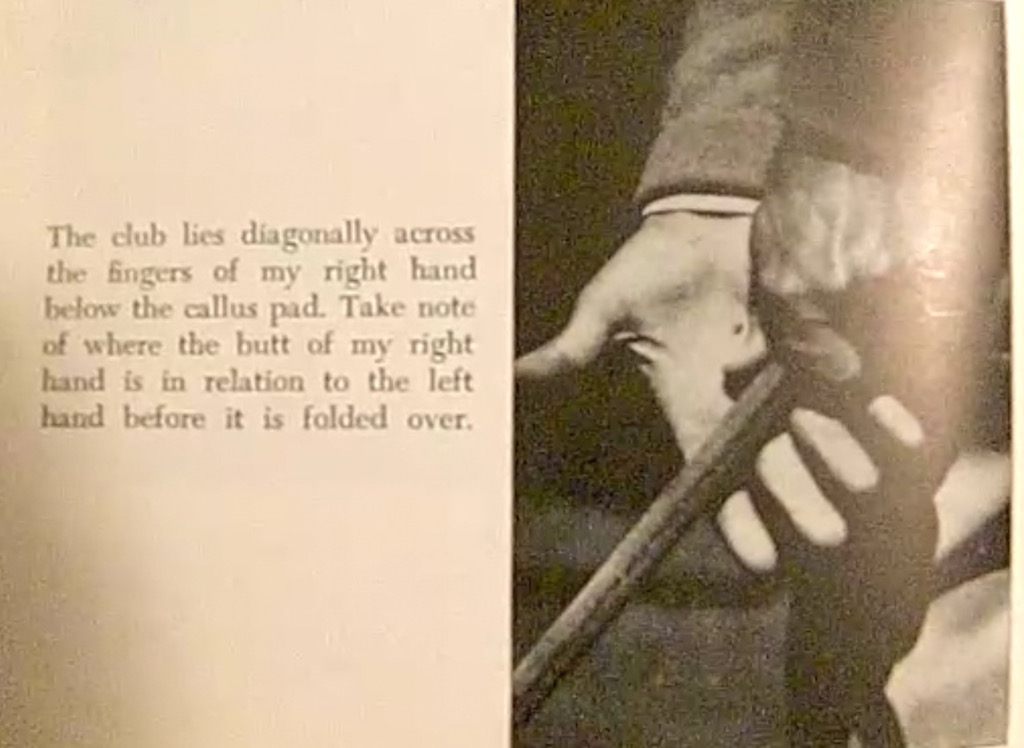

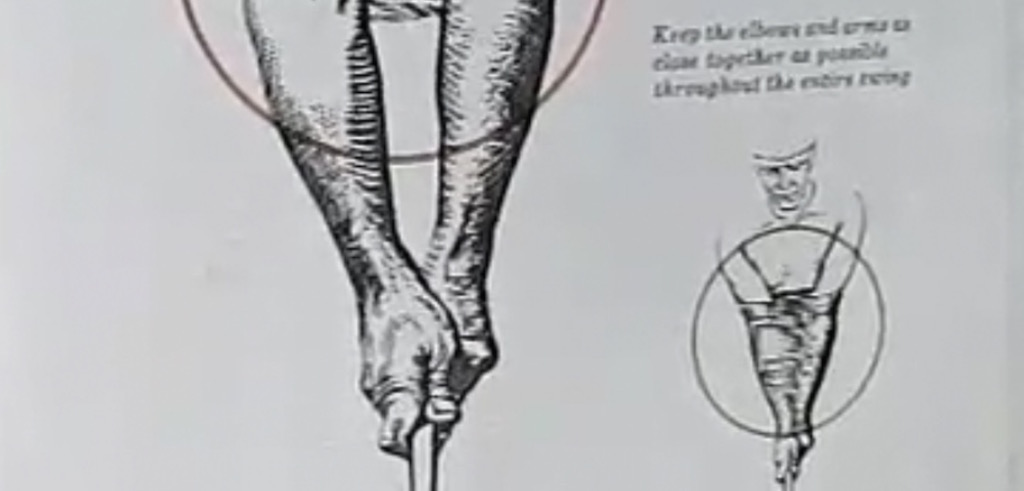
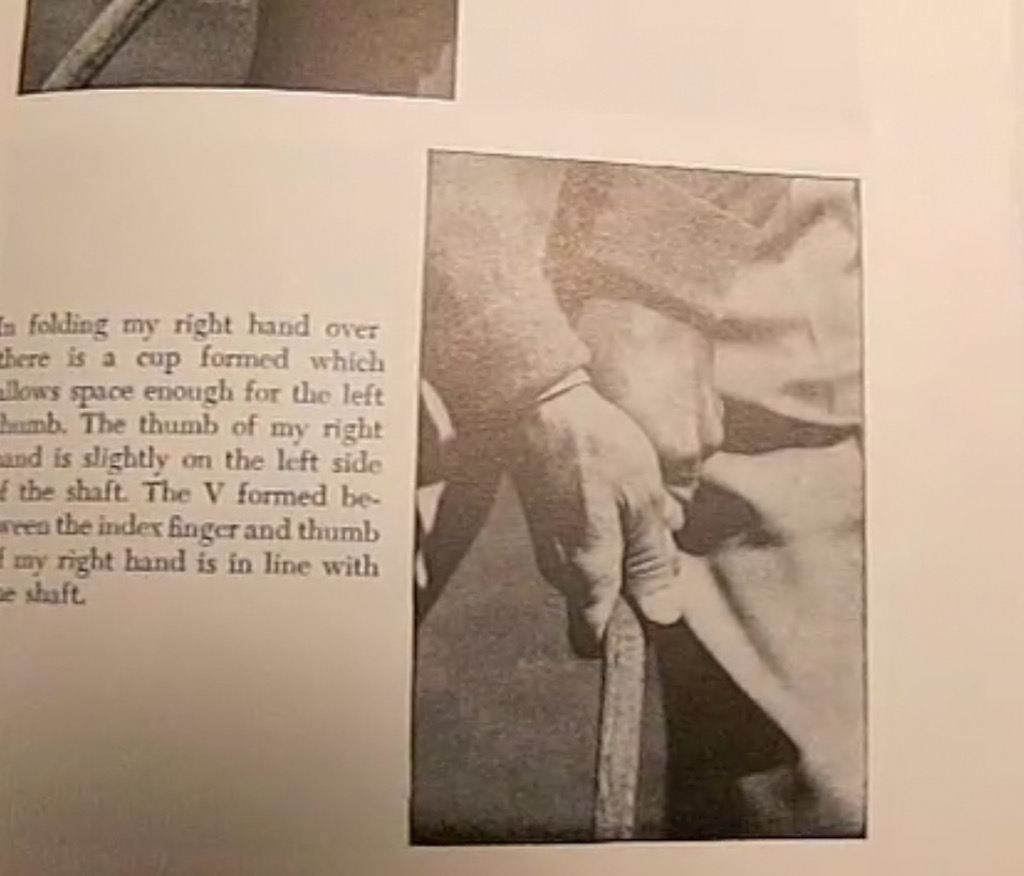










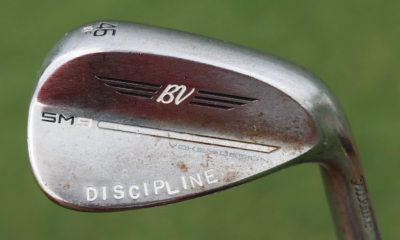







Big GG
Apr 2, 2021 at 1:57 pm
There is always no mention of the fact that Hogan did not write 5 lessons.
Art Gula
Aug 29, 2018 at 7:52 pm
Hi Wayne , I’ve been playing golf for 50 years and my beliefs and swing are comprised of nothing but Mr Hogan. From the stance, grip, rotation , body and finish. I maintain a 0 & 1 handicap in 3 leagues. Thanks
ART GULA
Dan Forant
Aug 6, 2017 at 6:25 am
Wow after playing 40 years shooting high 70’s/low 80’s, the long thumb deal has worked wonders for my game gaining control and distance since being in the 70’s age bracket. The short thumb actually shortened my clubhead arc length.
Steve Wozeniak
Aug 1, 2017 at 4:40 pm
Long article for an easy subject……his set up changed his grip. Once he learned how to set up correctly he started to feel the forces in the swing. As far as the long and “short” thumb, hello, put your left hand on the club and now push your thumb down and long……TENSION. He learned to just simply hold the club in the fingers like an athlete tension free. After setting up correctly he started to feel the inner and outer forces working, half a left arm and wishing he had three right hands when he wanted to hit it hard. He NEVER felt this before in his old set up and swing. And he DID NOT dig it out of the dirt he learned this from my Coach. Who also taught this to Claude Harmon, Jackie Burke, Jack Grout and many others that wanted to listen.
Steve Wozeniak PGA
Bob Pegram
Aug 1, 2017 at 2:55 pm
I recently read a reference to Ken Venturi’s comments on Hogan’s swing. He mentioned that Hogan was a “knuckle-dragger,.” In other words, he had extremely long arms in relation to his body size. Venturi said there are some recommended positions in The Five Fundamentals that are impossible for a person with shorter arms to get into.
Other item: I wonder if, after Hogan’s accident, he had pains that told him when he was swing the right way versus the wrong way. That would sure tell him immediately when his swing was wandering from the ideal swing he wanted.
Howard Clark
Jul 31, 2017 at 2:49 pm
Wouldn’t be nearly as interesting today, with the ProV1x which you can’t hook no matter how poor your swing or grip.
TeeBone
Jul 31, 2017 at 6:33 pm
Funny, I still see plenty of “banana” slices out there.
Lou
Jul 31, 2017 at 11:05 am
The one thing that Ben failed to adequately give up in his writings and interviews was the real “secret” to his stroke and that is he actually had a golf swing. When compared to another with a real swing, Bobby Jones, it is obvious to the practiced eye the left shoulder was the center of the swing and the hands did little other than guide the club face. The grip adjustments he made were necessary to move the direction from the left side of the fairway to the right, just as so often claimed. Wayne did a fine job of showing the evolution of Ben’s grip and that is all he claimed with the headline. Thanks Wayne! Ike
Wayne DeFrancesco
Jul 31, 2017 at 9:13 am
I would say that Hogan had two main problems he addressed over time. One was the length of his swing, especially with the driver, and the other was the tendency to hook the ball at inopportune times. His early swings with the longer clubs were extremely long, looking almost John Daly -like in the 30’s. I believe that he felt that the shortened left thumb helped him gain control of the top of his swing, although if you watch his swings through all his major wins his driver swing was consistently past parallel. In the drawings you reference in The Five Lessons Hogan’s actual swing resembles the “If his grip is faulty” picture much more than the “if his grip is correct” picture. Hogan’s actual driver swing never was short of parallel as depicted in the book. Part of the reason that he continued to swing the club past parallel has to do with his solution to his hooking problem, which was to roll the face open and cup his wrist from the start of the swing all the way to the top. This left forearm pronation combined with left wrist dorsiflexion creates additional wrist cock and procuces an increased angle between the left arm and the shaft. Hogan’s backswing had a “flinging” aspect to it where he started with a slight handle drag then “threw” the clubhead against his hands in mid-backswing before “catching” the clubhead and interrupting the backswing with the reversal of the right pelvic clockwise rotation to counter-clockwise. With the left wrist cupped and the face fanned open the change of direction produced a large amount of clubhead lag. Hogan was very strong but of slight build at less than 140 pounds and found that the speed he could create with this action kept him hitting the ball long enough to compete while gaining overall control. As Hogan got older and his trunk thickened he lost some of his trunk mobility and ability to move his pelvis, so when you look at swings from the Hogan vs. Snead match and the 1967 Masters you see a much shorter version but the same general characteristics.
Jeff Martin
Jul 30, 2017 at 12:17 pm
Game effort by Wayne, but, like many others, he has fallen prey to the timeline error contained in the August 8, 1955 Life magazine article that incorrectly placed the discovery of the “secret” in early 1946. That timing makes no sense given his playing record in 1945 and 1946, which was exemplary; his play throughout 1947, which was erratic; and the fact that Hogan didn’t win either, let alone both, of George May’s 1946 events, as he recalled he did after finding the “secret”, but did win the 1947 World Championship in September, after a break of a couple weeks (the other George May event was played earlier in the year). More importantly, contemporaneous accounts, for example, the January 10, 1949 Time Magazine cover story, which places the discovery in 1947, and published comments by Henry Cotton (who visited the US in the fall of 1947 for the Ryder Cup and spent time with Hogan discussing Ben’s plan to adopt a “power fade” that winter), make clear that the changes that comprised the “secret” were not implemented until the 1947-48 off-season. Video of swings from 1948 confirm this, revealing a weaker left hand grip than found in the “Power Golf” illustrations and companion film footage.
Dave Mason
Jul 30, 2017 at 9:59 am
Very interesting read. When I started playing I read Power Golf and Five Lessons and this is a great refresher, reminding me of the time I’d study the grip portions of those books.
D'oh
Jul 30, 2017 at 3:00 am
You obviously do not or have not understood the cupping of the left wrist part in regards to the top of the swing because you’re a dunce
Lloyd
Jul 30, 2017 at 5:16 pm
Wayne D should step in and respond to Obs good questions otherwise the dumb trolls win.
Wayne DeFrancesco
Jul 31, 2017 at 9:15 am
I did. See a couple of comments down.
Ude
Jul 30, 2017 at 8:01 pm
Forget about asking questions. This is a show-and-tell forum for sycophants and gearheads.
D'oh!
Jul 31, 2017 at 10:15 am
It’s a Secret. That’s the point. D’oh!
Sid Trench
Jul 30, 2017 at 2:51 am
Very informative article which reminded me of much that I had forgotten much. Thank you
The Hammer of Truth
Jul 29, 2017 at 4:17 pm
He wasn’t that good, he didn’t have to beat anyone
Nelson was better but left the game and Snead didn’t do much till later in his career.
All the real men were fighting wars.
Jeff Martin
Jul 30, 2017 at 11:41 am
During WWII, Hogan left the tour in August 1942 and did not rejoin full-time until August 1945. He beat everyone in 1940, 1941, 1942, 1946 and 1948, when he was leading money winner and had lowest stroke average each year. Nelson’s three big years were 1939, 1944 and 1945 (the latter two when all the real men were fighting wars); Snead’s big years were 1938, 1949, 1950 (1949 and 1950 being the year of Hogan’s accident and his first year back) and 1955.
Maslie
Jul 29, 2017 at 11:47 am
It would be even better if we can see bit deeper on Hogan clubs evolution, particularly his club length and lie too. Great read!
johnnied
Jul 31, 2017 at 12:58 pm
Watched an interesting video blurb on the golf channel about hogan’s clubs. it seems that he used a steel wire down the grip as a reminder for his weakend grip. The wire was about the size of a coat hanger which would produce a fairly sizable rib. The way it was positioned there was no way you could hook it. was that his “secret”?
Jeff Martin
Aug 1, 2017 at 8:06 am
I think it was at least part of his “secret” because, according to Byron Nelson, Hogan had a tendency to re-grip the club stronger during a round. The “reminder” rib would let him know if he was re-gripping. I have gripped a couple of Hogan’s drivers at the USGA museum that had the reminder, and the rib places the left hand into a weak, one-knuckle position.
Darrin
Aug 4, 2017 at 10:01 am
Hogan was 5’8″ tall and 140 lbs in his prime. Sure he was very strong for his size, kind of like a gymnast I suppose, but ‘big thick meaty hands?” Maybe relative to his size but compare to someone who is 6’0 190 lbs probably not.
But go ahead and keep spinning your narrative, it’s quite fun to witness how your brain works. And please, remember to take your meds.
Jeff Martin
Aug 5, 2017 at 9:55 am
The grips weren’t “thin”, felt like they were maybe built up a wrap or two. The grip rib was to help prevent him from unconsciously re-gripping it stronger. I’m sure he knew where to put them without the reminder…
Mums
Jul 29, 2017 at 11:43 am
Very well done. Thanks!
ROY
Jul 29, 2017 at 11:07 am
Great read!!!!
Tom F. Stickney II
Jul 29, 2017 at 8:32 am
Fantastic analysis Wayne…great read as well. Why you’re one of the best in our industry!
Wayne DeFrancesco
Aug 1, 2017 at 6:05 pm
Very nice of you to say that Tom. I appreciate it.